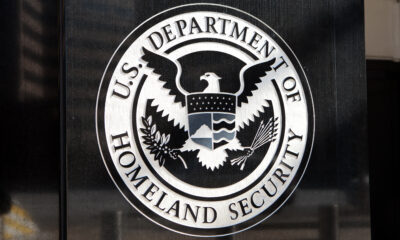Canned Foods Recalls – ALARMING Trends Emerge

Canned food recalls are becoming more frequent and costly, potentially putting American consumers at risk from everything from botulism to foreign materials.
At a Glance
- Biological contamination accounts for 76% of food recalls, with Listeria and Salmonella causing 40% of all recalls
- Major financial consequences occur for companies facing recalls, with some like Hallmark/Westland Meat Packing and Peanut Corporation of America forced into bankruptcy
- Historical canned food recalls have prompted industry-wide safety improvements, including the standardization of canning processes after a 1919 botulism outbreak
- Recent recalls include Tri-Union Seafoods’ 2025 tuna recall due to defective pull tabs and Conagra’s 2023 recall of 2.6 million pounds of canned meat
Federal Oversight and Financial Impacts
The U.S. food supply safety is primarily monitored by two major federal agencies. “The safety of the U.S. food supply is one of the main mandates of the Food and Drug Administration (FDA) and the Centers for Disease Control (CDC),” explains Angie Mohr, a financial expert tracking the industry’s economic impacts. When recalls occur, they often affect the entire country, resulting in losses that can reach hundreds of millions of dollars for manufacturers. These financial consequences become particularly devastating when combined with legal settlements for illnesses or deaths traced back to contaminated products.
The history of food recalls includes the catastrophic 2008 case of Hallmark/Westland Meat Packing Company, which had to recall over 143 million pounds of beef after violating USDA regulations. This massive recall led directly to the company’s bankruptcy filing. Similarly, Peanut Corporation of America’s 2009 salmonella outbreak killed nine people and sickened more than 700, resulting in criminal charges against executives and the company’s financial collapse. These cases demonstrate how quality control failures can completely destroy established businesses.
Contamination Types and Historical Patterns
Analysis of over 35,000 food recalls reveals that product contamination accounts for 91% of all recalls, while processing issues represent the remaining 9%. Within these categories, biological contamination and allergens constitute about three-quarters of all recalls. Listeria monocytogenes stands as the most common culprit, responsible for 7,844 recalls (22% of total recalls), followed closely by Salmonella serovars causing 6,597 recalls (18% of total). Together, these two pathogens account for a staggering 40% of all food and beverage recalls in the United States.
Historic Canned Food Disasters
One of the earliest significant canned food recalls occurred in 1919 when botulism in canned olives prompted nationwide concerns. This incident led to the standardization of canning processes that continue to protect Americans today. Forty years later, the 1959 “cranberry scare” erupted when traces of a cancer-causing weed killer contaminated the Thanksgiving staple. The situation became so politicized that then-Vice President Richard Nixon famously stated “he saw no reason for ‘hysteria’ over cranberries” while consuming cranberry products at campaign events.
In 1973, a massive botulism scare led to the recall of 75 million cans of mushrooms, prompting an infamous “pizza funeral” as businesses disposed of potentially tainted products. Perhaps even more devastating was the 1982 recall affecting over 60 million cans of salmon after a botulism death in Belgium. These early incidents established the pattern of extensive precautionary recalls that continues in modern food safety practices, where companies must weigh the cost of recalls against potential liability for consumer illness or death.
Recent Major Recalls
Conagra’s 2023 recall of 2.6 million pounds of canned meat products happened after discovery of damaged cans that could lead to contamination. This massive recall demonstrated that even with modern technology, basic packaging integrity remains a critical concern. Looking ahead to 2025, Tri-Union Seafoods will face a major recall of tuna products featuring defective “easy open” pull tabs that could allow deadly botulism-causing bacteria to contaminate the food. These faulty seals highlight the industry’s persistent vulnerability to seemingly minor manufacturing defects.
Pet food recalls have become increasingly common, with Hill’s Science Diet’s 2019 recall of 21.6 million cans of dog food due to excessive vitamin D levels highlighting how quality control issues extend beyond human consumption. Similarly, Abbott Laboratories recalled over five million containers of Similac baby formula in 2010 after discovering contamination from a “common beetle.” These cases demonstrate that the most vulnerable consumers—pets, infants, and the elderly—often face the greatest risk from contaminated canned products.
Future Industry Challenges
New concerns are emerging in canned food safety as demonstrated by the 2022 recall of smoked baby clams containing high levels of PFAS, often called “forever chemicals.” These industrial compounds persist in the environment indefinitely and represent a growing concern for consumers. In response to these and other challenges, Congressional bills like the “Honest Label Act” have been proposed to improve transparency in food safety. The canned food industry now faces the dual challenge of addressing traditional bacterial contamination while also responding to emerging chemical hazards.
With 76% of recalls stemming from biological contamination, the industry continues to invest in detection technology and safety protocols. Despite these efforts, the consistent pattern of recalls demonstrates that complete safety remains elusive. American consumers should remain vigilant about food safety recalls while recognizing that the increasing frequency of recalls may actually indicate a more effective safety system rather than declining quality. Following proper storage guidelines and heeding recall notices remains the best protection against foodborne illness.
























